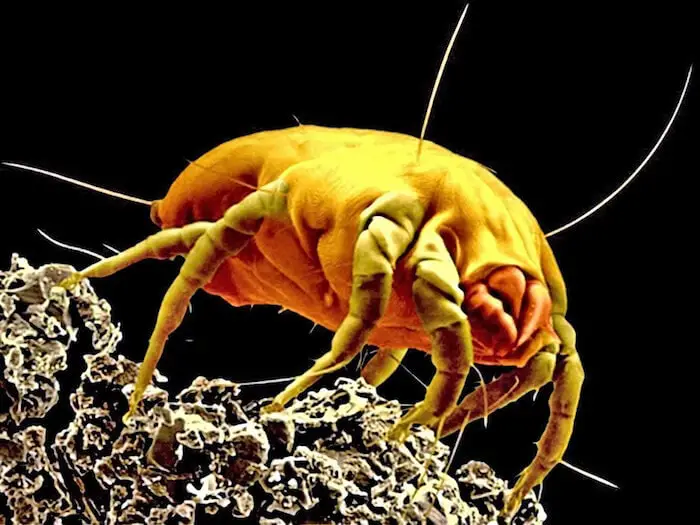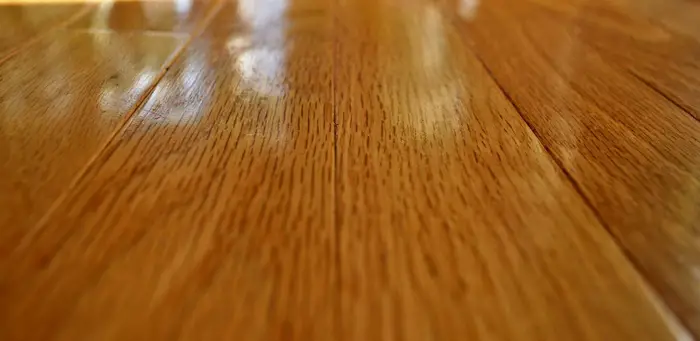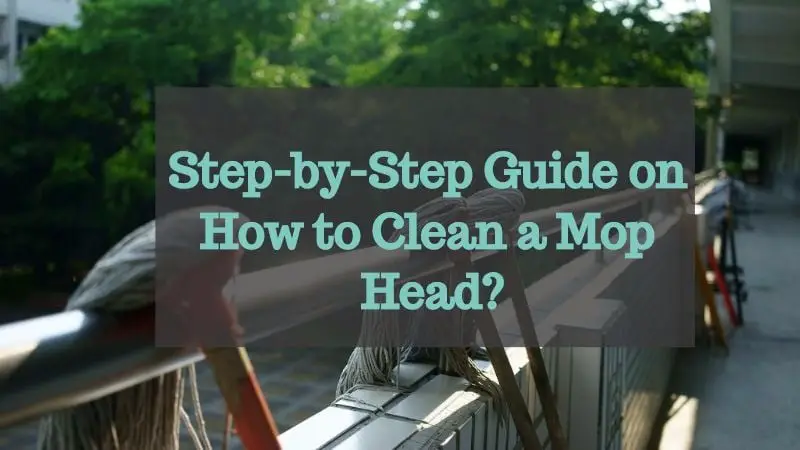24 Easy Ways to Get Rid of Dust Mites and Get Allergy Relief
Dust mites are sinister and terrible pests. Although they are invisible, they are almost everywhere. You will never know they are in your house until you start getting allergies associated with them. Do you suffer from a runny nose and nasal congestion even though you don’t have a cold? Have you gotten watery eyes, body rashes, or diathesis, but you don’t have pollen or food allergies? Dust mites may be responsible. So, how do you get rid of dust mites?
For many years, I have been suffering from eczema, and my particular case is caused by dust mites. After trying many chemical sprays, I opted to go the natural route to have a long-lasting solution. In this post, I offer many suggestions that I have followed to help keep dust mites at bay.
Here are 24 tips on how to get rid of dust mites:
A high concentration of dust mites is one of the main causes of the development of allergies and diseases such as asthma and rhinitis. 80% of young adults and children with asthma are allergic to dust mites.
The National Institute of Environment Health Sciences suggests that over 45 % of U.S. homes have a high concentration of dust mites exceeding the normal level that can cause allergies.
What makes dust mites allergenic are their feces and body parts. Therefore, killing the mites won’t solve your problem. By reducing the dust mite population, you will decrease the risks of their multiplication and allergens, but you will still need to make changes in your cleaning routine and daily life to get relief. While you might not be able to change your overall lifestyle and cleaning routine, there are a few techniques you can implement to reduce the number of dust mites in your home.
1. Wash Your Beddings Regularly
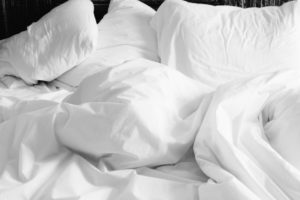
Because of the warm, humid, and dark environment of your bed, it is an excellent habitat for dust mite growth and multiplication. Additionally, your skin sheds flakes of dead cells during the night, and these can become a healthy food source for these sinister pests.
Fortunately, dust mites hate hot temperatures. Washing your bed sheets at 60°C or 140°F water is enough to get rid of these pets as well as remove their body parts and fecal matter. If you have a tumble dryer, put your sheets through a spin cycle until they become dry. The heat from your dryer will ensure that any mites that might have survived the wash cycle are killed and eliminated. There is also a special detergent like this on Amazon that you can use to get rid of dust mites. This detergent will kill these pesky pests. Clean your beddings on a weekly basis to keep the population of this pest’s population at a minimum.
2. Invest in Hypoallergenic Mattresses and Mattress Covers
On average (although these estimates vary greatly), a mattress has 100,000-10 million dust mites. Irrespective of the exact figure of the average population of dust mites, one thing is certain; even the cleanest mattresses have a large number of microscopic vermin. Unfortunately, you cannot make a mattress dust mite-free. However, you can implement several measures to ensure you control mite populations and these things will keep the pests’ decaying body parts and feces away from your body.
If you don’t have a hypoallergenic mattress like these, consider investing in one or a cheaper alternative such as an anti-allergenic mattress protector. A mattress protector provides a barrier between your skin and these pests, thereby preventing your body skin and moisture from acting as a food source for them. Likewise, the mattress protector stops these pests from reaching your skin.
Although this can be a costly technique, a study published in the New England Journal of Medicine in 2004 found that covering kids’ pillows like this and mattresses with special anti-allergenic casing helped reduce cases of asthma and its complications significantly. This study built upon earlier research that had recommended the use of these protectors for asthmatics.
3. Clean Regularly

This sounds like an obvious tip, but if you want to know the power of dust mites to breed and colonize an area, try not to clean your home for some time. The average human can shed enough dead skin in one day to feed one million dust mites for a day. This is why maintaining a frequent cleaning routine is vital.
Note places in your home where dust tends to settle and clean them weekly with a microfiber duster, damp cloth (see my reviews) or anything that will actually pick up dust rather than moving it around.
For More: 25 Cleaning Tips For Allergy Sufferers
4. Freeze the Mites
Some objects such as stuffed toys and silk cushion covers cannot be washed in a washing machine at high temperatures. If these items can fit in your freezer, place them in a container or sealed bag and freeze them for 24 hours. Although this procedure won’t get rid of allergens, it will kill mites.
Vigorously shake or vacuum the frozen items after freezing to remove dead mites and their debris from the frozen items. If possible, put your items through a low-temperature wash cycle to kill the remaining dust mites.
5. Don’t Bother Making Your Bed
This must be good news for people who dislike making their beds in the morning. If you are such a person, rejoice! Instead of making your bed, it is better to let your mattress cover and duvet get some good aeration. This allows moisture that was excreted from your body to dry.
As mentioned earlier, dust mites love moisture. Although they cannot drink water, they absorb it through the air. By reducing humidity and moisture within your bed covers, you are making life difficult for mites, thereby reducing their multiplication.
6. Dust Household Items with Diatomaceous Earth
Diatomaceous earth (DE) is refined powder made from fossilized relics of aquatic organisms called diatoms. The skeletons of these creatures resemble cylinders with sharp edges. DE doesn’t affect humans but can kill parasites and small insects, including dust mites. Sprinkle DE on bedbug, flea, and mite populations to kill them. You can dust it on your carpets, mattresses, pet beds, bedding, and rugs. Allow it to settle for a few hours or overnight, if possible. Be sure to go for a food-grade variety, which is safe for use at home or in an area with animals and pets.
7. Avoid Feather Duvets and Pillows
If you sleep as recommended, you will spend eight hours each day with your face resting on a pillow. Therefore, it needs to be comfortable, soft, and free of allergens. Traditional feather pillows are not only lumpy but also difficult to wash. Besides, they offer an ideal environment in which dust mites can grow and multiply. The same applies to feather duvets.
If possible, use hypoallergenic synthetic duvets and pillows instead. They not only provide a less-comfortable environment for dust mites to thrive but they are also easy to clean as you can wash them at 60°C (140°F), which will kill all the mites.
8. Use a Specialized Bed Vacuum
An ordinary vacuum cleaner may not have enough suction power to destroy dust mite allergens and remove their debris. A handheld dust mite vacuum (see details) can, therefore, be an effective and convenient tool to get rid of dust mites in your mattresses. These vacuums often have extra features such as UV light to kill mites and powerful motors to eliminate mite fragments.
9. Invest in Hard Flooring Instead of Carpeting
Like soft furnishings and beds, carpets offer an ideal home for dust mites. They trap pet dander and dead skin, which become ideal foods for the mites.
Make sure you replace the carpeting in your bedroom (preferably, in the whole house) and install hard floorings such as laminate, tile, linoleum, or wood. This is one of the most effective ways of getting rid of dust mites. With hard flooring, they will not have a comfortable breeding ground.
If you find it impractical or overly expensive to get rid of your carpet, try vacuuming your house regularly, at least thrice a week. People suffering from dust allergies should open windows and wear a dust mask when vacuuming. To reduce exposure to airborne allergens when vacuuming, many people use a high-efficiency particulate arresting filter (HEPA filter). However, HEPA filters have been shown to be less effective in handling dust mites.
You can also use carpet treatments and sprays that kill dust mites and other allergens. However, in the long run, the only ideal solution is to install hard flooring and do away with mite-infested carpeting.
10. Use Essential Oils
Most of the dust mite sprays are overly expensive and loaded with powerful chemicals that can cause allergies or endanger pet safety.
A better solution is to use tea tree oil. Thanks to the antibacterial, antifungal, and antiviral properties of this oil, it kills dust mites as well as other allergy-causing viruses, bacteria, and fungi. Eucalyptus oil is also an effective option, with proven mite-killing abilities.
Mix two spoons of essential oil with two cups of distilled water and decant the resultant in a dark-colored spray bottle. Wet-dust using this blend, or use it as a mite-killing spray for bedding and carpets. Remember to shake the spray bottle well before use to mix the solution evenly.
11. Lower the Humidity and Temperature in Your Home
Keeping your home dry and comfortable is the key to dust mite control. If the humidity in your home exceeds 50 percent, dust mites have an ideal environment in which to thrive. Below this percentage, they will have a hard time growing and multiplying. Start using a dehumidifier, if necessary.
On dry days, allow fresh air into your house. The American Lung Association endorses opening of windows for one hour each day to lower humidity.
A room temperature of 65–72°F, particularly in the bedroom, helps reduce dust mite populations and improve your quality of sleep!
Related article:
12. Keep Pets Out of Your Bedroom
Make your pets sleep outside or limit their movements to one or two rooms as dust mites love pet dander.
As a pet owner, you should know that 30 and 80 % of dogs and cats, respectively, test positive for dust mite allergies. Common signs in both include recurrent ear infections and inflammation as well as itching.
13. Cut the Clutter
Anything that collects dust attracts dust mites, and clutter is one such thing. Clearing unnecessary picture frames, ornaments, piles of paper, stacks of books, and other unused items will not only make your house look organized but also reduce dust mite populations.
You should also reduce the number of ornamental cushions on beds and sofas. Swap fabric and padded headboards for wooden ones to eliminate hiding places for mites.
Homes with bare floors harbor 90% less dust than carpeted homes. Therefore, choose wood or tile flooring over carpeting, and decorate with small, easy-to-clean rugs.
14. Get Rid of Cushions, Soft Furnishings, and Curtains
Soft furnishings and curtains offer great homes for dust mites. Fabric traps moisture and dust, which mites feed on while protecting them from potential threats. Each time you sit on a fabric chair or open your curtains, dust mite debris gets into the air, which causes allergies for people who are allergic to these pests. If you are one of those people, then you need to get rid of those items.
Get rid of dust mites by:
- Replacing your curtains with easy-to-clean blinds
- Using leather or artificial leather armchairs and couches
- Replacing fabric cushions with artificial leather or leather cushions
- Steam cleaning your soft furnishings if you cannot afford to replace them with leather cushions (see the next tip)
Cuddly toys offer other habitats for dust mites. This might not sit well with your kids, but try to reduce the number of cuddly toys in your house. If you cannot do this, then air them out regularly. Place them in a plastic bag and put them in the freezer for 24 hours (see tip number 4). This will eliminate most of the dust mites.
15. Use Steam Cleaners
If you have fabric that is not machine-washable, steam cleaners can be of great help. You can use them on curtains, carpets, kitchen/bathroom surfaces, cushions, and many other things. The steam kills dust mites as it kills bacteria and dissolves dirt.
Related Article: 33 Uses For Handheld Steam Cleaner
16. Purify the Air
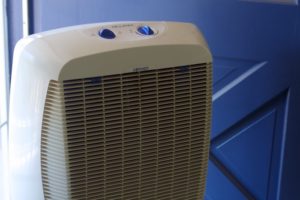
Use a HEPA air purifier like these to keep dust mites out of your bedroom. Dust mites and their debris often become airborne since they hang in the air for some time before settling on fabric and other surfaces. An air purifier captures dust mites and other allergens by holding them in their filters as it releases fresh air into your house. A HEPA filter eliminates 99.97% of all the allergens that pass through it.
Related Article: Do Air Purifiers Remove Pet Hair?
Can I Use Air Purifier With Window Open?
17. Use a Dehumidifier
We have already mentioned that dust mites thrive in moist areas and reducing the humidity levels can be a good way to combat their population. You may use a dehumidifier like this on Amazon in your home to successfully reduce the moisture and get rid of dust mites.
The micro-organisms cannot live in a dry environment and this way you can give them a hard time for survival. You can find some of the best dehumidifiers here.
18. Dust Mite Laundry Detergent
You know that it’s important to wash the bed linens and pillow covers frequently to get rid of dust mites. But, do you know how to do the laundry correctly? Not many people know that there are special dust mite laundry detergents available in the market.
These are specially formulated detergents that contain an additive known as ACARIL, which effectively kills dust mites and removes pollen, pet dander, and mold from fabric. It can be used as an anti-allergen laundry detergent while washing.
19. Dust Mite Spray
When you want a quick and immediate solution, there nothing like a dust mite spray (see details). It comes handy when you need to treat a specific area. With a 33 oz. spray bottle, you can easily treat an area of 600 square feet and re-treat in every 3 days for best results.
The spray uses a 100% Mineral concentrate that aids in destroying the allergens such as pet dander, dust mites, pollens, mildew, and mold. It does not cause any stains, nor does it contain any enzyme, petroleum, essential oils or harsh chemicals. The spray can be safely used on vehicle interiors, window curtains, carpeting, upholstery, pet bedding, and more.
20. Anti-mite pad
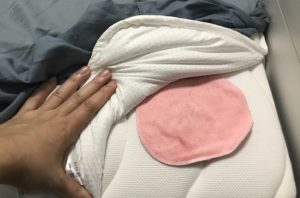
These easy to use anti-mite pads(see details) are a lifesaver if you have allergies or asthma because they are potent enough to destroy the small worms and mites to give you germ-free air. The pads are small in size and they can be easily kept under the mattress, under furniture, or on pet beds.
The anti-mite pads do not contain any pesticides or hazardous chemicals. As a result, they are safe to use indoors if you have kids at home. They are eco-friendly and work effectively to get rid of dust mites for 90 days.
21. Make All Doors and Windows Airtight
Another effective way to curbing dust mites at home is to reduce the amount of dust that gets into the house. This can be done by sealing the edges around the doors and windows so that no amount of germ or pollutant-laden air gets inside the house.
The edges can be caulked or you may install a draught-proof rubber seal on the sides. This strategy works great for conserving energy in winter as well as summer.
22. Wipe with Damp Cloth
A good home remedy is to wipe the surface while cleaning your home. It’s more likely that the dust mites will become airborne if you wipe the surface clean with a wet cloth. When you are done the cleaning with a damp cloth, wash it off with hot water to kill any germs or dust mites in it.
23. UV Sanitizers
The ultraviolet (UV) sanitizers like this are available in the form of wand-like devices, boxes or lamps. Their manufacturers claim that these products can be used to kill viruses, bacteria, and pathogens such as dust mites. The devices emit strong radiation which de-activates the RNA and DNA of microorganisms by inflicting photochemical damage to the genetic material.
The UV sanitizers emit radiation that contains mercury, a hazardous metal. As a result, you must wear UV-impermeable eyewear for protection. Not following the safety instructions may result in potential damage to the user’s health.
24. Keep Textiles And Plush Toys To Minimum

When you are allergic to dust, it is better to be safe than sorry. Keep textiles to a minimum in your bedroom and try to get rid of any decorative pillows, upholstered bed frames, and furniture. I would suggest that you choose furniture with smooth surfaces such as wood or leather.
Plush toys should also be avoided or at least not placed on the bed. Make it a habit to clean the soft washable toys regularly at 60 degrees C or place inside the freezer for 12 hours to destroy allergens.
Dust Mites Q&A
Are there a diseases dust mites might cause?
House dust mites are the main causes of allergic rhinitis, asthma, and eczema. These pesky pests are also linked with urticaria, conjunctivitis, anaphylaxis, dermatitis, angioedema, hypersensitive pneumonia, allergic headaches, migraine headaches, extrinsic allergic alveolitis, and certain gut disorders when IgE is involved. You should go for clinical diagnosis to confirm the health problems linked to mite exposure.
Are dust mites visible?
Yes, you can see them if they are left to accumulate on top of a porous cover that has undisturbed moisture and food. It is, therefore, important to dust microporous covers regularly to prevent this from happening.
Do dust mites bite?
House dust mites do not bite. However, enzymes in their droppings can kill or harm your delicate cells, ultimately causing poor cell defenses.
What does a dust mite look like?
They are microscopic organisms that cannot be seen with naked eyes. When seen under a microscope, they appear as white bugs. They have eight legs so they cannot be called insects but arthropods such as spiders. They measure about 0.1 to 0.5 millimeters.
Can sunlight kill dust mites?

Yes, sunlight can kill dust mites and save you from sneezing and wheezing, however, just leaving your carpet and bed linens to bake in the sun is not enough. You need to wash them regularly with hot water and then let them dry in sunlight for a long time.
Where do dust mites live?
This microscopic kind of spider thrives on beddings, mattresses, carpets, curtains, and upholstered furniture. They are too small to be seen with naked eyes and usually feed on dead skin flakes that people and pets shed daily. Mites multiply rapidly in warm and humid conditions.
How do I know if I’m allergic to dust mites?
The common signs and symptoms of dust mite allergy are similar to those of hay fever, such as runny nose and sneezing. Some people may also experience symptoms that are common to asthma, such as difficulty breathing and wheezing. Other symptoms include stuffy nose, postnasal drip, watery eyes, itchy nose, sore throat, and cough.
If you have any of the above symptoms, I would recommend that you immediately go to the local hospital and get an allergy test done.
Can UV light kill dust mites?
Due to its effectiveness, Ultraviolet light has been used in the medical field to sanitize equipment and instruments. UV-light can kill bacteria, viruses, germs, dust mite eggs, dust mites, and molds, however, the time taken to destroy will depend on the strength of the light and the amount of time the microorganism is exposed to the light.
How long does it take for a dust mite to die under UV-light?
It may take between 5 minutes to an hour to kill the adult dust mites, depending on the frequency and strength of UV light used. The fresh eggs of dust mites take about 5 mins to die when irradiated at 10-55 cm distance.
At what temperature do the dust mites die?
These microscopic organisms thrive in a moist environment ranging between 68 to 77 degrees Fahrenheit. Humidity levels between 70-80 percent are ideal for insects. As a result, exposing dust mites to extreme temperatures more than 130 degrees (extreme hot water) can potentially kill them.
Can bleach kill dust mites?
Yes, to some extent. Adding a small quantity of bleach to the washing machine can help kill the dust mite allergen present on bedding. However, be careful to not use with colored bedding as this can take the color out of the fabric. Always use bleach when washing white linens only. Bleach should not be used if you have asthma or allergies.
Can the dryer destroy dust mites?
Wash the bed sheets, pillowcases, bedcovers, and blankets in hot water that is minimum 130 F to get rid of dust mites and allergens. If the bedding cannot be washed with hot water for any reason, you may put the items in a dryer for 15 minutes at above 130 F temperature.
Can house dust mites travel with me?
Absolutely. The dust mites may easily travel on airline passenger’s skin, clothes, baggage, and food. Just like humans, they also visit new places, establish new colonies, expand their population and interact with various organisms through diverse means.
Are dust mites parasites?
They are not parasites as they don’t sting, burrow, or bite. The harmful allergens are formed from their body fragments and fecal pellets. You can find the dust mites almost everywhere. Nearly four out of five houses in the US have some levels of dust mite allergen.
By following the steps above, how soon will I not notice improvements in my child’s health?
This depends on the child’s confirmed allergies and overall health. By covering pillows, mattresses, and duvets, you will be creating a safer sleep environment and practicing sleep hygiene as recommended by doctors.
Although it is virtually impossible to get rid of all dust mites from your home, the abovementioned methods and techniques can drastically reduce their number and neutralize their threat to your family’s health.
